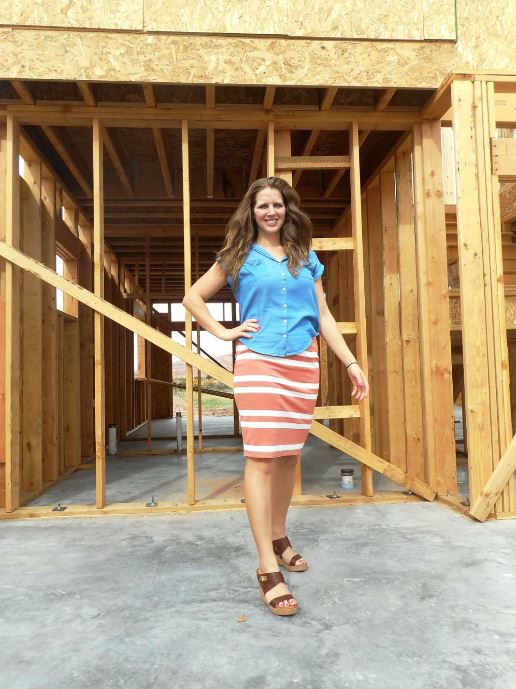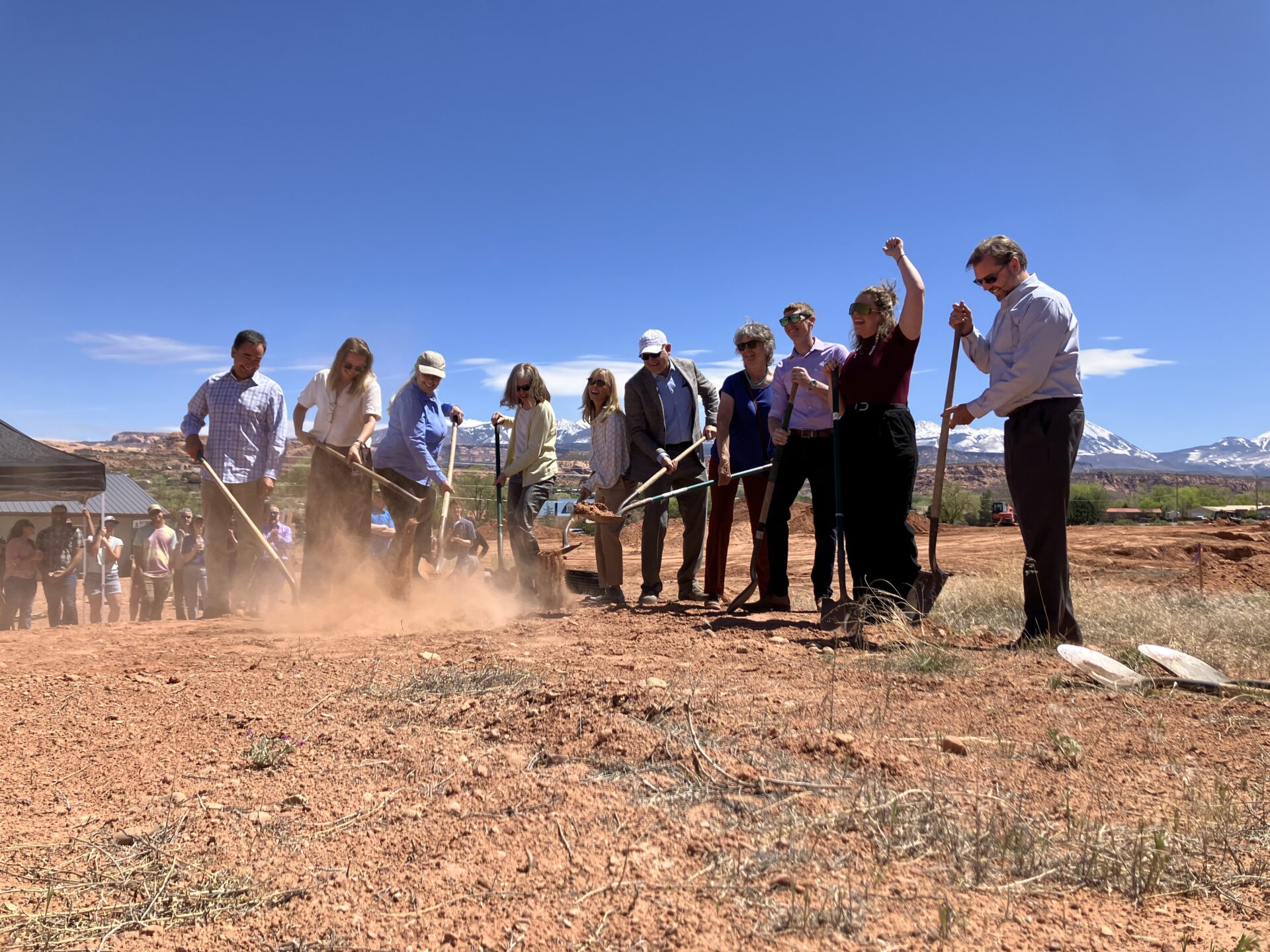Local elected officials have “a series of critical decisions coming up” regarding housing policies, said Grand County Community and Economic Development Director Zacharia Levine at the Moab Area Housing Task Force meeting on Sept. 6.
The three policy items that could affect future housing development in the Moab area are the High Density Housing (HDH) Overlay being considered by Grand County; the Planned Affordable Development (PAD) ordinance for the City of Moab; and an Assured Housing Policy under consideration by both the city and county.
The HDH Overlay, which would only affect lands in the county but outside of city limits, aims to address the shortage of housing for Moab’s workforce and other residents by creating incentives for the development of primary residential housing.
With the overlay, developers would be able to build at higher densities than typically permitted in the underlying zone, if the majority of the housing is deed restricted so as to “remain accessible to residents and local area workers over a reasonable duration of time,” according to the draft policy on the Grand County website.
“If anyone uses the overlay, they will have to deed-restrict 80 percent of the housing they build with this increased density,” said Kaitlin Myers, Grand County Community and Economic Development specialist, in an interview with the Moab Sun News. “They’ll have to deed-restrict to people who live and work here.”
Nightly rentals and subletting would be prohibited in the deed-restricted units.
Myers said the definition of residency is being determined; it could mean an owner occupies the dwelling unit for a minimum of nine months per year; a renter must have a lease term no shorter than six months within a single calendar year.
The language regarding a requirement for employment within the county is not finalized, but Myers said there would be exceptions for retirees and the disabled.
The HDH Overlay deed restrictions do not put any requirements on tenant income or on housing price.
“We decided to not deed restrict for affordability,” Myers said, “because one thing we have seen is that while housing prices have skyrocketed, wages have stayed stagnant. We are letting the market dictate how high or how low the prices are. We want to allow developers to build housing in any way that they want, and ultimately it is up to them to price their developments so people in the community can afford them.”
Myers said that the overlay policy has been modified from earlier drafts in regard to building height. “We have updated it so that the building height is generally the same as in the underlying zoning, except one part of the policy map that is close to city limits on the western side of U.S. Highway 191; there it is increased to 50 feet, or four stories. It is the only part on the map where we have increased building height.”
In previous plan iterations, there were other areas that were increased to 45 feet, but this was changed because of “lots of public concern,” Myers said.
The Grand County Planning Commission will hold a public hearing on the HDH Overlay on Sept. 25 at 5 p.m. in the Grand County Council chambers. If the Grand County Planning Commission approves the overlay after the public hearing, it could come before the Grand County Council for consideration at one of its October meetings.
PLANNED AFFORDABLE DEVELOPMENT (PAD) ORDINANCE
The PAD ordinance being drafted by the Moab City Planning Commission, which would only affect land inside city limits, has key similarities to the draft HDH Overlay being considered by the county.
The current draft of the PAD ordinance states that its purpose is “to provide incentives for the development of affordable housing while preserving the intent of the underlying zone in which a PAD is developed.”
Like the HDH Overlay, it would increase density while imposing deed restrictions as to residency and work, with exceptions for the disabled and retirees, and would prohibit subletting and nightly rentals.
Unlike the HDH Overlay, the PAD ordinance would also restrict tenancy to those making or below the area median income.
The planning commission is currently working on specifics of the ordinance regarding affordability and other development criteria.
“The PAD ensures that density equals affordability, whereas the HDH overlay at the county creates density without the assurance of affordability,” Moab Mayor Emily Niehaus said in an interview with the Moab Sun News.
Niehaus said she understands the county’s reasoning behind the HDH Overlay, but said, “I want for this community to feel that we’re not just doubling our size for the sake of growth, but that we are planning affordability mechanisms into that growth model.”
The Moab City Planning Commission will discuss the PAD ordinance when they meet at 6 p.m. on Thursday, Sept. 13, in the Moab City Council chambers.
ASSURED HOUSING POLICY
At the Sept. 6 Moab Area Housing Task Force meeting, Levine said legal representatives for the city and county have been working on an Assured Housing Policy. The results of that coordination were discussed at the Moab City Council’s meeting on Sept.10.
“The city is encouraged to follow all the recommendations in the Assured Housing study and ensure we get some affordable housing built in our community,” Niehaus said. “The city and county are in lockstep with affordable housing policy work.”
Kalen Jones, a Moab City Council member who attended the Sept. 6 meeting with the Moab Area Housing Task Force, said he is “excited” about the Assured Housing Policy.
“It seems like we have been working toward that for a long time via the Moab Area Housing Plan which identified that as one of a number of tools, the identification of that as a priority by the city bodies, our jointly funded nexus study with the county — to have that come together as an assured housing plan sometime this fall is exciting to me,” he said.
“And in conjunction with that, there is the PAD ordinance at the city, which has the potential to facilitate the development, and redevelopment, of the city to provide more housing, and specifically housing for the people who need it the most,” Jones said.
Myers encouraged people who are supportive of policies to increase the housing stock for Moab’s workforce and other residents to “come to the (public) meetings and speak about their housing struggles.”
“I hear every single day about someone’s housing struggle, like living out of their van and working because they can’t find a place that’s affordable to live,” Myers said. “Housing has such an impact on people. If someone doesn’t have a house to live in, or a stable place to go back to, it’s really hard to get everything else in line.”
Myers said that, for those who can’t attend a public meeting, there is also the option to “write an email or a letter, and let the (county or city) council know this would impact them in a personal way.”
Policies at city and county could impact development
“The city and county are in lockstep with affordable housing policy work.”
Grand County’s information page:
https://www.grandcountyutah.net/943/Current-Upcoming-Projects
Moab City Planning Commission Sept.13 meeting packet with a draft plan:
https://moabcity.org/AgendaCenter/ViewFile/Agenda/_09132018-772




